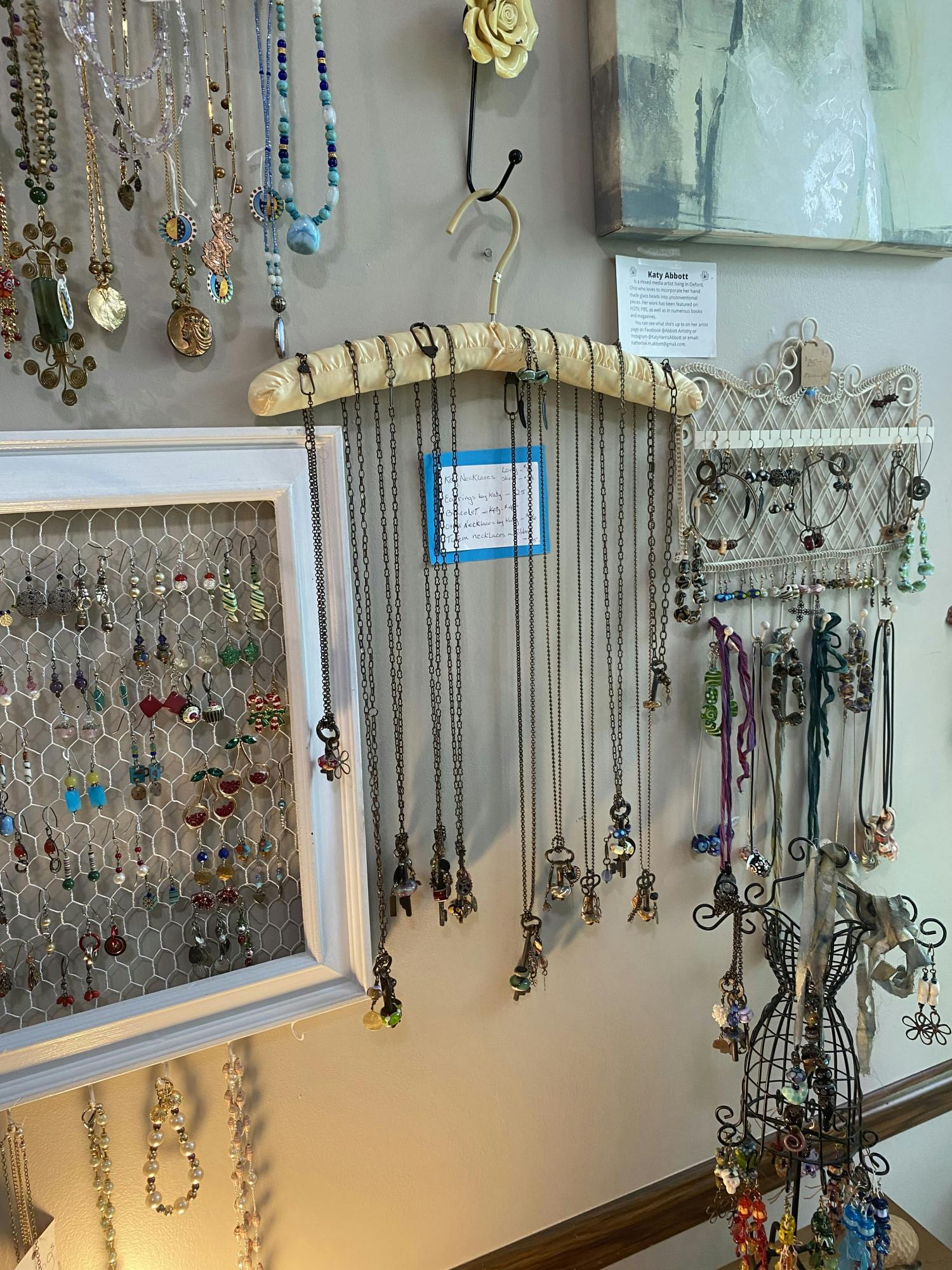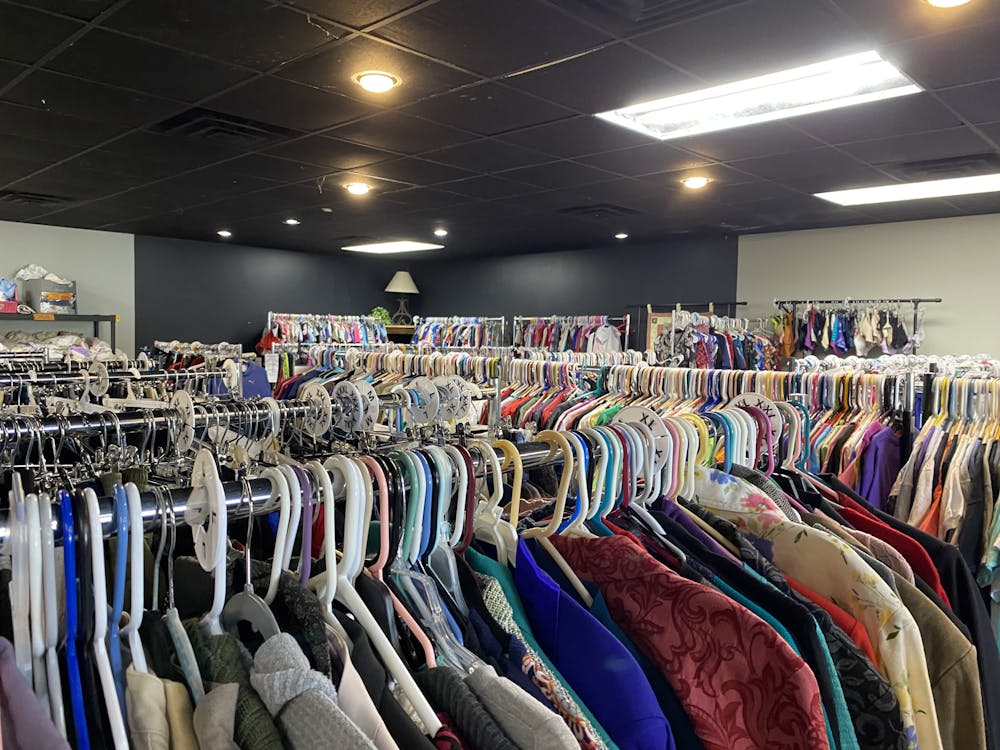The saying “one man’s trash is another man’s treasure” holds true for thrifters and environmentalists alike. The idea that secondhand clothing can combat environmental damage — while keeping creativity and fun alive — is a growing one in Oxford.
Each year, millions of tons of textiles pile up in landfills or get incinerated. Clothing production and incineration also drive up greenhouse gas emissions.
“If we’re going to have any chance of reducing environmental damage, we need to change our fashion practices,” said Ryan Rosu, president of Zero Waste Oxford.
Leading this charge in Oxford are organizations like Thread Up Oxford, Snazzy Boutique and Zero Waste Oxford — and they all have one thing in common: secondhand clothing. Across the board, they’re setting out to change attitudes about how we do fashion.
“It began with my passion for fashion, and caring about not just discarding and throwing things away, but refashioning,” said Virginia Maddocks, founder of Snazzy Boutique.
The idea behind refashioning is to take the clothes one has now, cycle them through new homes and get creative in styling them. These shops make that process easier for Oxford residents and students at Miami University.
Donating old clothing to Thread Up or Zero Waste Oxford is a great, and free, way to start and prevents it from becoming waste. Thread Up’s recycling program even accepts torn and stained textiles, so long as they are clean and free of mold or bugs. Purchasing from any secondhand store, such as Snazzy Boutique, supports the cause while also saving customers money.
Shana Rosenberg, director and founder of Thread Up Oxford, believes her message arrived at a good time. She’s inspired by the effort that the City of Oxford and its residents make to live sustainably.
“There are already people in town interested in sustainability,” Rosenberg said. “I’m just kind of bringing that textile element into, I think, a community that’s already really devoted to sustainability.”

SnaZZy Boutique also displays and sells jewelry and art from students.
Similarly, Maddocks sees local shopping trending and values the growing community around Snazzy Boutique. She believes that local action is a remedy to this global issue. On a basic level, buying clothes and textiles locally reduces carbon emissions created during transport, but it also reinvigorates the movement as a whole.
This sentiment is also shared by Zero Waste Oxford, where Rosu has seen an increase in membership throughout the past year.
Enjoy what you're reading?
Signup for our newsletter
“When you’re locally minded, you’re much more aware of your place in the world, and you’re more likely to take care of it,” Rosu said.
Miami students are a big part of this local mission. Rosenberg says that student involvement has improved for Thread Up over the years. This includes student customers, part-time employees and organizations volunteering for sorting events.
Likewise, Maddocks believes that her student volunteers and two interns have helped keep the store evolving and creative. She’s inspired by watching them take initiative during events and on social media platforms such as their Instagram, @SnaZZyBoutiqueandGifts.
Oxford’s sustainable fashion community has also become involved with other local social projects. Thread Up provides the Family Resource Center with clothing and household textiles, and recently made bowl koozies for Empty Bowls.
Maddocks and Rosenberg have also collaborated to discuss sustainable fashion and support each other. Unsold clothes at Snazzy Boutique are often donated to Thread Up.
“We see that we’re both working towards the same thing,” Maddocks said.
Changing fashion requires changing behavior – and reducing consumption is key. When buying new, Rosenberg recommends buying something high quality, that will be worn often. The ability to shop guilt-free makes secondhand clothing an appealing choice.
“A lot of people talk about consumption being bad, but if we just keep passing around the secondhand clothing, that’s okay, go ahead,” Rosenberg said.
When Maddocks rescues secondhand pieces for the shop, it brings back the excitement she finds in fashion. She takes joy in helping customers creatively style diverse secondhand pieces. This renewal of joy is key to the mission of secondhand clothing. Rosu also believes that getting people excited to thrift and live sustainably is essential.
Maddocks has experienced this attitude change first-hand. She recalls being a young girl hunkering down in her mother’s car at the thrift store, embarrassed and hoping no one could see her. By the time she got to college, thrifting was cool.
Today, she and a growing number of sustainable fashion leaders in Oxford are fostering this love of secondhand clothing in others.
So, have fun with it. Fighting fast fashion doesn’t mean abandoning the creativity of dressing. It just means changing the way it’s done — a movement long in the making.




